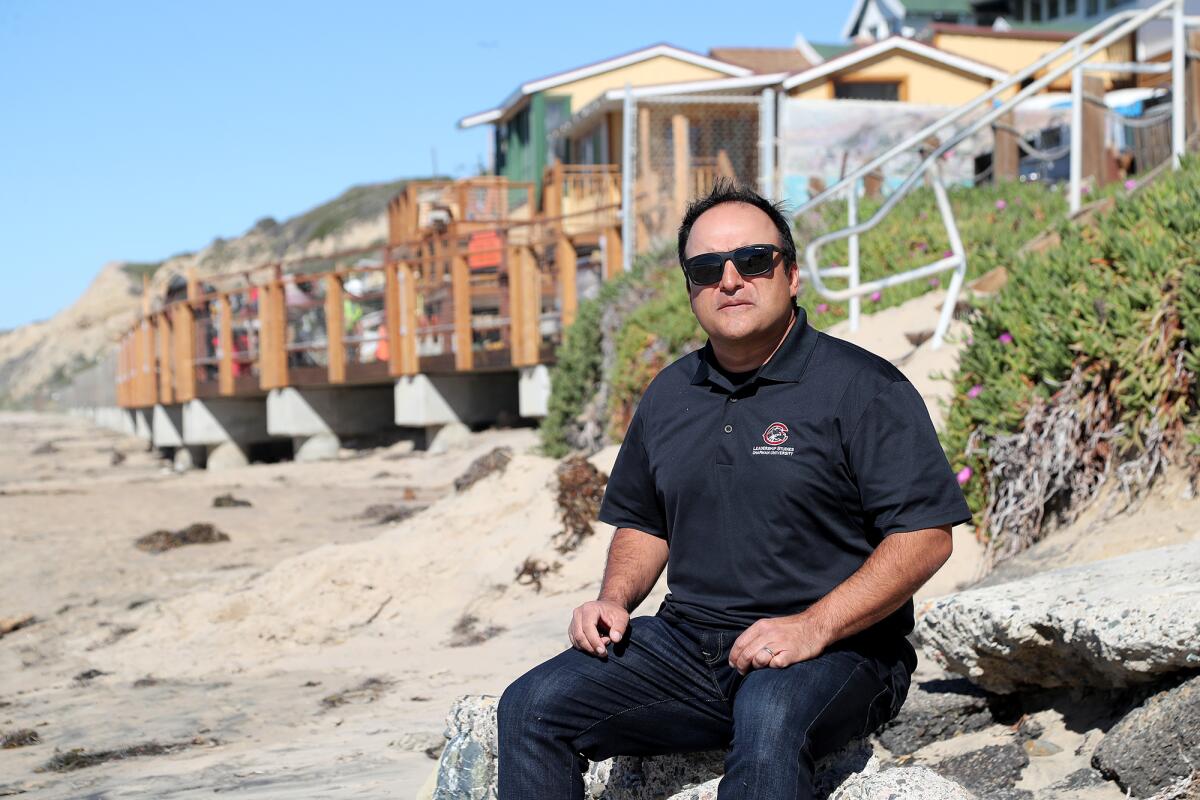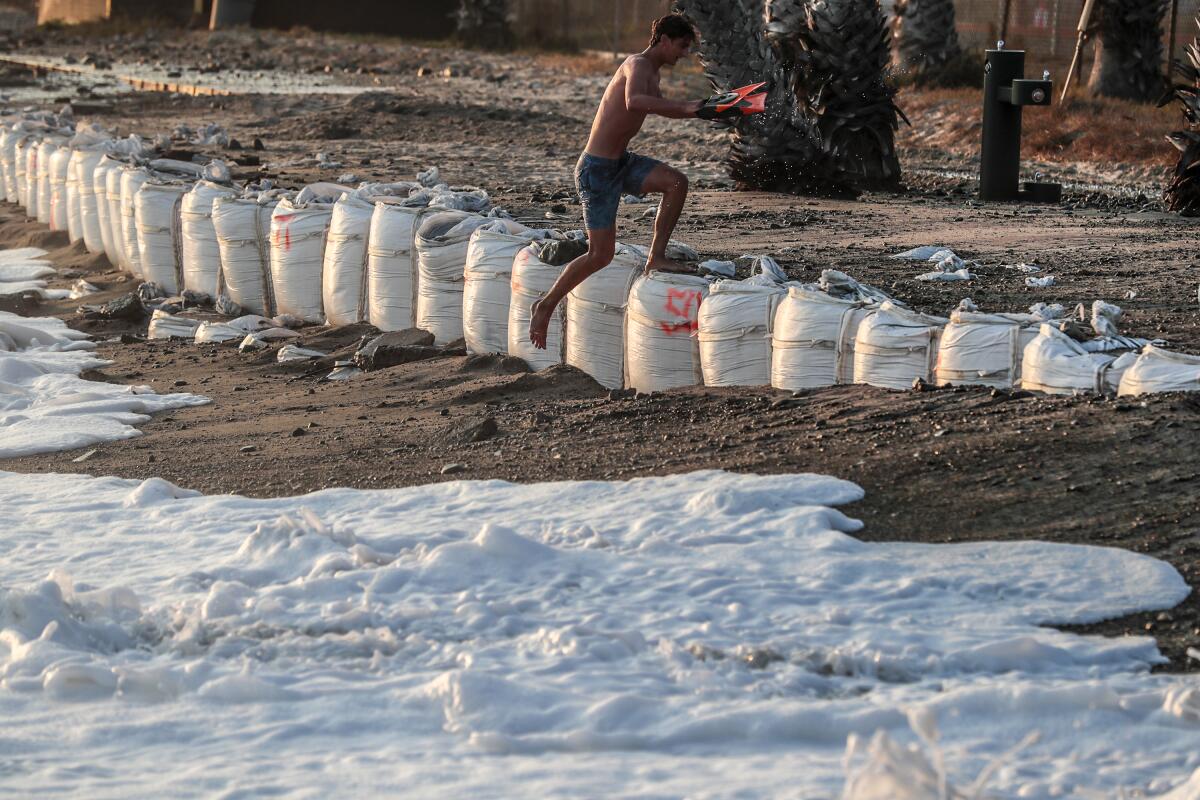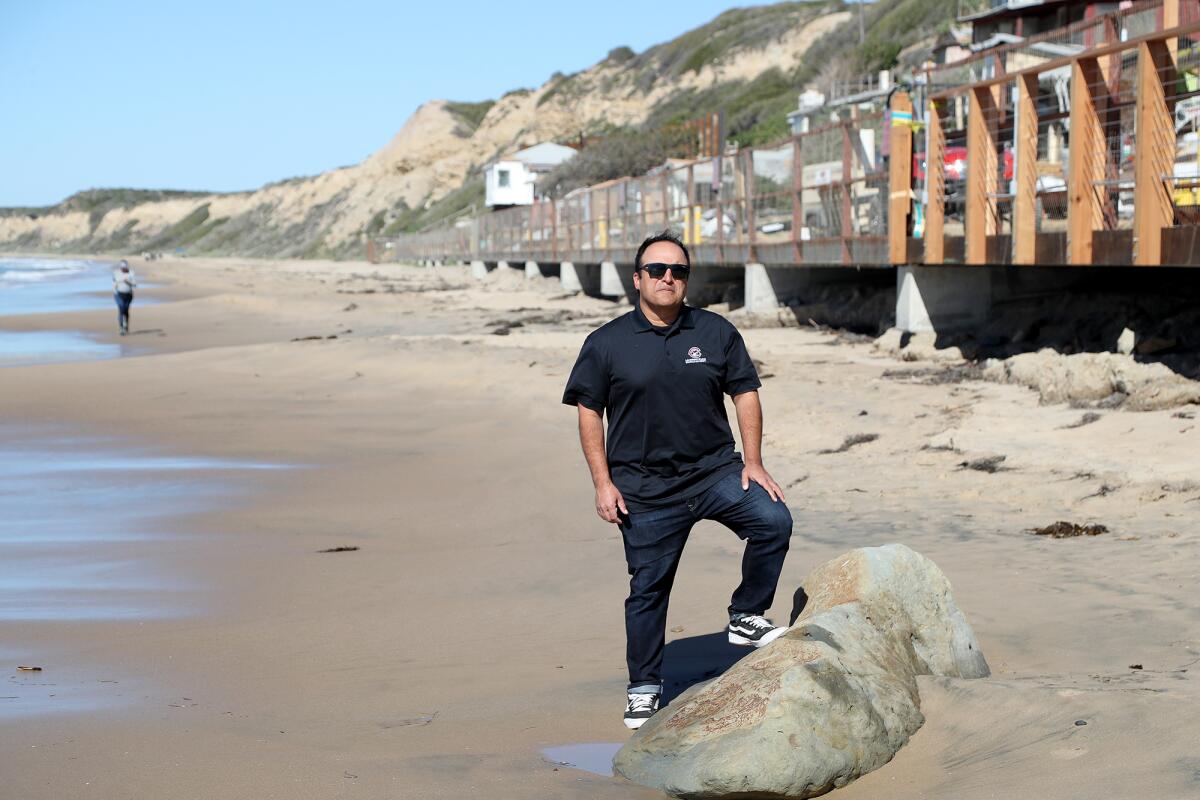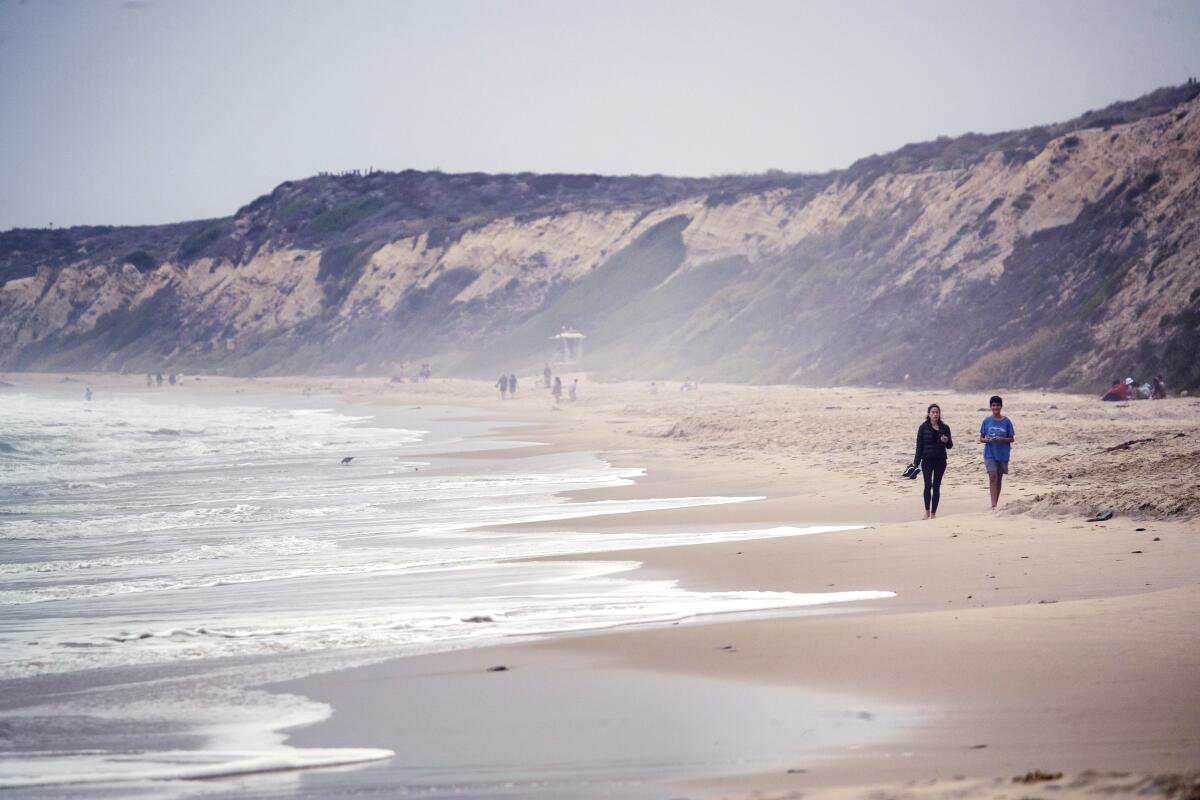Documentary about sea level rise and coastal erosion takes look at Balboa Island, Crystal Cove

When Mike Moodian was a teenager growing up in south Orange County in the early 1990s, Capistrano Beach was the place to be.
“It was where young people go to hang out and it was always considered one of those romantic beaches, where you’d take your first girlfriend to have your first kiss somewhere down in the sands,” Moodian, now 45, said in an interview this week. Now Capistrano Beach — located by Dana Point, bordering Doheny State Beach and San Clemente — is a shell of what it once was.
Rising sea levels and storms have eroded the sands, and the beach looks like a wasteland in a scene from a “Mad Max” film compared to its heyday, Moodian said..
But Capistrano Beach isn’t the only local strand to see changes. Drainage improvements at Balboa Island have had to be made to fend off rainstorms and high tides that can lead to flooding there.
“I’m always following the news, and have always been concerned about climate change and seeing the sea levels rise locally,” Moodian said. “I decided that this was a story that needed to be told.”
His thoughts led him to create a 30-minute documentary called “Coastal Crisis: California’s Vanishing Beaches,” which will air at 3:30 p.m. on KDOC-TV this Sunday.

The film is one of the efforts of a nonprofit group called OC World headed by Moodian, Manuel Gomez and Scott Hays. It’s the first of a series of documentaries the group plans to release, though it is the only one that focuses solely on sea level rise, coastal erosion and the resulting impacts on California’s coastline.
Research for the project began in December 2020, and filming occurred in March last year. Post-production wrapped up in January.
The filmmakers expect to release their other documentaries in the coming weeks, including a piece on Santa Ana and its relationship with the police; an interview with Santa Ana Police Chief David Valentin; and a look at COVID-19’s impact on California’s farmworker community.
“Coastal Crisis,” written and narrated by Moodian, includes the voices of experts such as Brett Sanders, a UC Irvine professor of civil and environmental engineering; Riley Pratt, a senior environmental scientist for California State Parks; former Newport Beach Mayor Keith Curry; the Surfrider Foundation; Rep. Mike Levin (D-San Juan Capistrano) and state Sen. Dave Min (D-Irvine), who represents a portion of coastal Orange County.
“A core part of our identity as Orange County natives, as Californians, is our coastline. Unfortunately, the climate crisis has put our coastal communities at risk,” said Min. “I am proud to have had a small part in the making of this important documentary, which showcases the real-life implications of what’s happening not just here in our own community, but all across the United States.
“Coastal erosion is coming whether we like it or not,” Min continued. “It’s on all of us to not only protect our way of life, but to find solutions that will help ensure our future generations are able to enjoy the majesty and beauty of our beaches and coastal ecosystems, just as we were able to do. As this documentary points out, the economic losses of coastal erosion and rising sea levels will be incalculable.
“Unwinding the effects of climate change won’t be easy, but we owe it to our children and future generations to take on this responsibility.”

Moodian, a lecturer at Chapman University in Orange, said he had written books before but chose to make a documentary because he felt it would reach a greater audience.
The documentary has since been submitted to the Newport Beach and Beverly Hills film festivals and will be available on demand through cable, but Moodian isn’t sure when or if it will be available online.
Besides Orange county beaches including Capistrano, Balboa Island and Crystal Cove, the film touches on the city of Pacifica in San Mateo County south of San Francisco. It discusses some of the efforts local jurisdictions have undertaken to prevent the loss of their coastlines, through the construction of seawalls and in some cases “managed retreat,” wherein people and buildings are moved inland and away from the creeping edge of the ocean.
Moodian said he hopes to move the conversation on what is happening, why it is happening and what people and community members can do to resolve the issue.
“I’m concerned about the world that my kid ... is going to inherit. It’s something that I wanted to do something about and try to explore this topic and create something that’s informative for the public,” said Moodian. “At the end, we ended on somewhat of a positive note.
“I feel like every single one of us — whether we’re rich, poor or wherever we land on the political spectrum — we all love the ocean and we can all take steps ... to be better stewards of the coast.”

All the latest on Orange County from Orange County.
Get our free TimesOC newsletter.
You may occasionally receive promotional content from the Daily Pilot.




